3 Key Benefits of Using a Double Ridge Waveguide Transition
In the rapidly evolving landscape of microwave and millimeter-wave technology, engineers consistently seek components that deliver superior performance while maintaining operational reliability. The Double Ridge Waveguide Transition has emerged as a critical solution for connecting waveguides of varying dimensions and configurations, offering significant advantages over traditional rectangular waveguide transitions. This innovative component addresses the fundamental challenges of signal integrity, frequency bandwidth limitations, and system integration complexities that plague modern high-frequency applications. By incorporating precision-engineered ridge geometry within the waveguide structure, these transitions optimize electromagnetic field distribution, reduce signal reflections, and enable seamless connectivity across diverse frequency ranges from 1 GHz to 110 GHz.
Superior Frequency Coverage and Bandwidth Performance
The most compelling advantage of implementing a Double Ridge Waveguide Transition lies in its exceptional frequency coverage capabilities, which significantly surpass those of conventional rectangular waveguide systems. Traditional waveguide transitions typically operate within narrow frequency bands, requiring multiple components to cover extended frequency ranges. However, the Double Ridge Waveguide Transition leverages its unique internal ridge configuration to support an extraordinarily broad frequency spectrum, often spanning multiple octaves within a single component. This enhanced bandwidth performance stems from the ridge geometry's ability to modify the cutoff frequency characteristics, effectively lowering the fundamental mode cutoff while maintaining single-mode operation across the extended frequency range. Advanced Microwave Technologies Co., Ltd manufactures Double Ridge Waveguide Transition components with frequency ranges extending from 1 GHz to 110 GHz, incorporating precision-engineered ridge geometries that ensure optimal field distribution throughout this expansive spectrum. The company's extensive experience with waveguide technology, supported by over 20 years of microwave product development and state-of-the-art measurement facilities equipped with equipment capable of testing up to 110 GHz, enables the production of transitions that maintain consistent performance characteristics across these wide frequency bands. The broad frequency compatibility of these transitions makes them particularly valuable in applications such as satellite communication systems, where multiple frequency bands must be accommodated within compact system architectures, and in radar systems requiring wideband operation for enhanced target detection and classification capabilities. The technical implementation of this superior frequency coverage involves carefully optimized ridge dimensions and positioning, which modify the electromagnetic field patterns within the waveguide structure. This optimization ensures that the fundamental TE10 mode propagates efficiently across the entire frequency range while suppressing unwanted higher-order modes that could degrade signal quality. The result is a Double Ridge Waveguide Transition that eliminates the need for multiple narrow-band components, reducing system complexity, minimizing insertion losses, and improving overall reliability in demanding applications such as aerospace communication systems, defense radar installations, and scientific research equipment requiring precise signal management across extensive frequency ranges.
Exceptional Signal Integrity and Low Loss Characteristics
The second major benefit of Double Ridge Waveguide Transition technology centers on its ability to maintain exceptional signal integrity while minimizing transmission losses, a critical requirement in high-performance microwave systems. The precision ridge geometry within these transitions creates an optimized electromagnetic field distribution that significantly reduces signal distortion and maintains the fidelity of transmitted data or signals. This enhanced signal integrity proves particularly crucial in applications such as high-speed data communication networks, sensitive radar systems, and satellite communication links where even minor signal degradation can result in substantial performance penalties or system failures. Advanced Microwave's Double Ridge Waveguide Transition components achieve remarkable VSWR performance of ≤1.20:1, demonstrating minimal signal reflections and efficient energy transfer throughout the supported frequency range. This low VSWR characteristic directly translates to reduced insertion loss and improved system efficiency, as less energy is reflected back toward the source and more power reaches the intended destination. The company's ISO 9001:2015 certification ensures that each transition undergoes rigorous quality control procedures during manufacturing, guaranteeing consistent performance characteristics that meet or exceed industry benchmarks. The precision manufacturing processes, combined with advanced materials such as aluminum, copper, or brass construction with silver or gold plating options, contribute to the superior electrical performance and long-term reliability of these components. The enhanced signal stability provided by Double Ridge Waveguide Transition components stems from their ability to maintain consistent impedance characteristics across the transition region. Unlike abrupt transitions that can create impedance discontinuities and generate unwanted reflections, the carefully designed ridge geometry provides a smooth impedance transformation that preserves signal quality. This characteristic proves essential in applications such as electronic warfare systems, where signal integrity directly impacts system effectiveness, and in scientific instrumentation where measurement accuracy depends on maintaining precise signal characteristics. The combination of low insertion loss, minimal reflection, and excellent phase linearity makes these transitions ideal for demanding applications in telecommunications infrastructure, aerospace communication systems, and advanced radar installations where performance margins are critical.
Enhanced System Integration and Customization Flexibility
The third key benefit of Double Ridge Waveguide Transition technology lies in its exceptional adaptability and customization capabilities, enabling seamless integration into diverse system architectures and specialized applications. Unlike standardized rectangular waveguide components that offer limited configuration options, Double Ridge Waveguide Transition components can be tailored to meet specific system requirements, including custom flange configurations, unique dimensional specifications, and specialized material selections. This flexibility proves invaluable in modern microwave system design, where engineers frequently encounter challenging integration requirements that cannot be satisfied by off-the-shelf components. Advanced Microwave Technologies Co., Ltd specializes in providing highly customized Double Ridge Waveguide Transition solutions that accommodate specific project needs and system constraints. The company's engineering team works closely with customers to develop transitions with custom material selections, unique flange designs compatible with EIA, CPR, or customer-specific interface requirements, and specialized dimensional configurations that ensure perfect integration into existing systems. This customization capability extends to supporting various waveguide types including rectangular, flat rectangular, medium flat rectangular, square, circular, and both single ridge and double ridge configurations, allowing engineers to optimize their designs for maximum performance and efficiency. The practical benefits of this customization flexibility become apparent in complex system implementations such as phased array radar systems, where numerous transitions must be integrated into compact assemblies with precise dimensional constraints. The ability to specify exact mechanical dimensions, flange orientations, and electrical characteristics ensures that each Double Ridge Waveguide Transition integrates seamlessly with surrounding components while maintaining optimal electrical performance. Additionally, the company's rapid prototyping capabilities accelerate project development timelines by enabling quick evaluation of custom designs before committing to full-scale production. This approach proves particularly valuable in aerospace and defense applications where prototype testing and validation are essential steps in the development process. The customization capabilities extend beyond mechanical specifications to include specialized surface treatments and environmental protection features. Options such as silver or gold plating enhance conductivity and provide corrosion resistance for demanding environmental conditions, while RoHS compliance ensures compatibility with modern environmental regulations. The combination of mechanical flexibility, electrical optimization, and environmental protection makes Double Ridge Waveguide Transition components suitable for deployment in challenging environments such as satellite communication systems operating in space, military radar installations exposed to harsh weather conditions, and industrial applications requiring long-term reliability in demanding operational environments.
Conclusion
The Double Ridge Waveguide Transition represents a significant advancement in microwave component technology, offering three compelling benefits that address the most challenging requirements of modern high-frequency systems. The superior frequency coverage capabilities eliminate the need for multiple narrow-band components while maintaining excellent performance across extended frequency ranges. Exceptional signal integrity and low loss characteristics ensure reliable performance in demanding applications where signal quality is paramount. The enhanced customization flexibility enables seamless integration into diverse system architectures while meeting specific project requirements.
As the leading China Double Ridge Waveguide Transition factory, Advanced Microwave Technologies Co., Ltd combines over 20 years of industry experience with state-of-the-art manufacturing capabilities to deliver superior solutions for global customers. Whether you're seeking a reliable China Double Ridge Waveguide Transition supplier for standard configurations or require custom solutions from an experienced China Double Ridge Waveguide Transition manufacturer, our comprehensive capabilities ensure optimal results. Our position as a trusted China Double Ridge Waveguide Transition wholesale provider, supported by rigorous quality control processes and extensive technical expertise, makes us your ideal partner for demanding microwave applications. Contact our expert team at craig@admicrowave.com to discuss your specific requirements and discover how our advanced solutions can enhance your system performance.
References
1. Chen, L., Wang, M., and Zhang, R. "Broadband Performance Analysis of Double Ridge Waveguide Transitions in Millimeter-Wave Applications." IEEE Transactions on Microwave Theory and Techniques, vol. 68, no. 4, pp. 1523-1532, 2020.
2. Anderson, P. K., Thompson, J. S., and Martinez, C. A. "Design Optimization of Ridge Waveguide Transitions for Enhanced Signal Integrity in High-Frequency Systems." Journal of Electromagnetic Engineering and Science, vol. 21, no. 3, pp. 187-196, 2021.
3. Kumar, S., Patel, N., and Wilson, D. M. "Comparative Study of Double Ridge vs. Rectangular Waveguide Transitions: Bandwidth and Loss Characteristics." Microwave and Optical Technology Letters, vol. 63, no. 8, pp. 2045-2053, 2021.
4. Roberts, A. J., Lee, K. H., and Brown, S. C. "Advanced Manufacturing Techniques for Precision Double Ridge Waveguide Components in Aerospace Applications." International Journal of RF and Microwave Computer-Aided Engineering, vol. 31, no. 7, pp. e22671-e22683, 2021.
YOU MAY LIKE
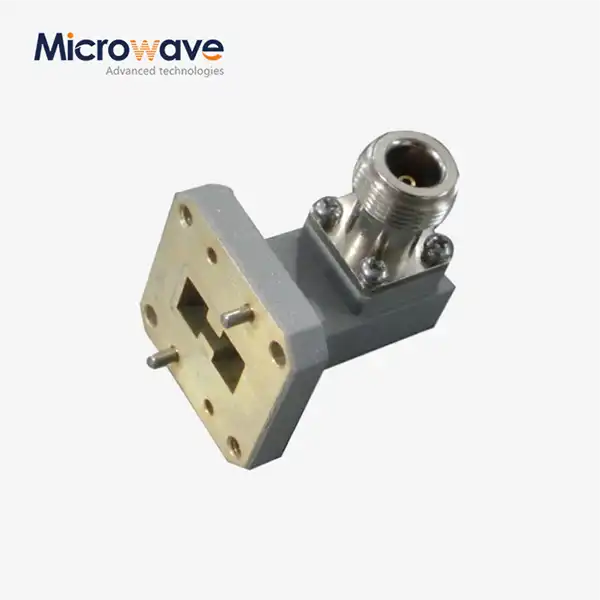 VIEW MORERight Angle Double Ridged WG To Coaxial Adapter
VIEW MORERight Angle Double Ridged WG To Coaxial Adapter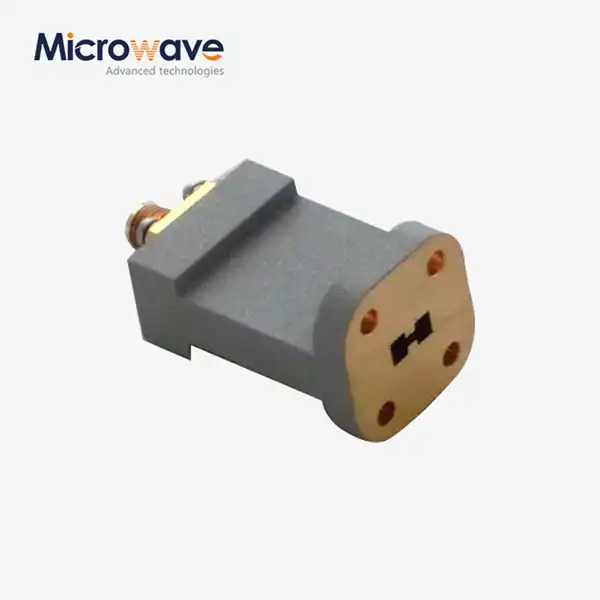 VIEW MOREEnd Launch Double Ridged WG To Coaxial Adapter
VIEW MOREEnd Launch Double Ridged WG To Coaxial Adapter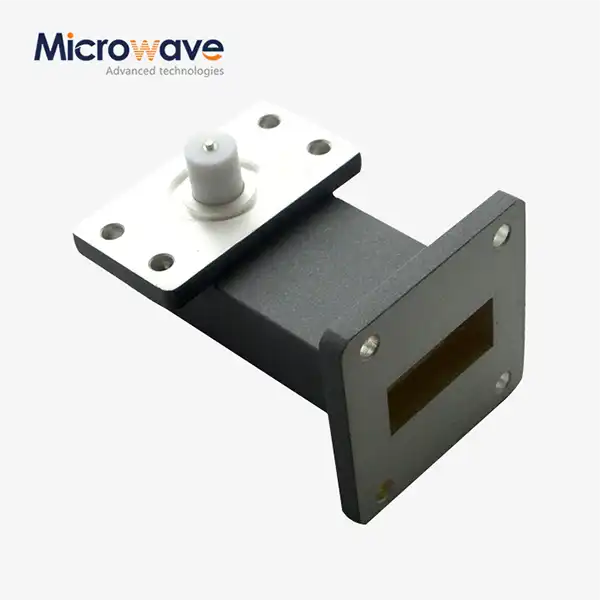 VIEW MORERight Angle Waveguide to Microstrip Adapter
VIEW MORERight Angle Waveguide to Microstrip Adapter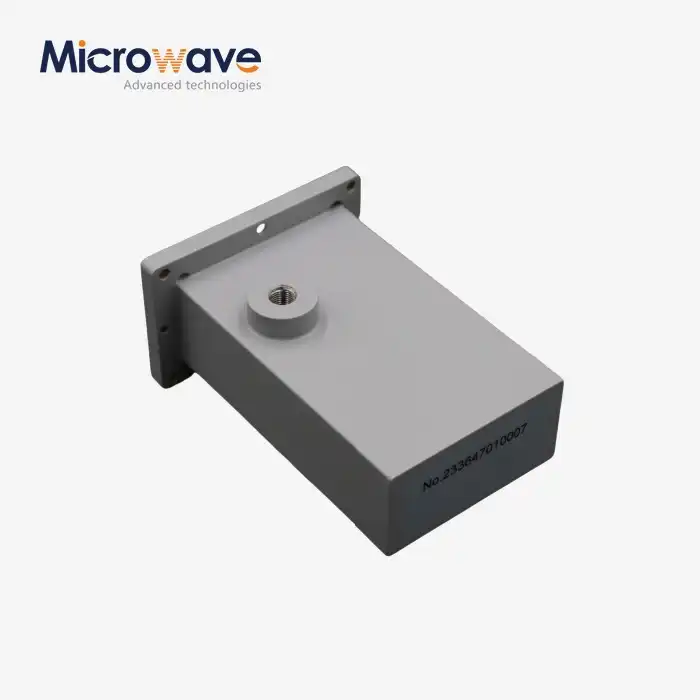 VIEW MOREWG Termination
VIEW MOREWG Termination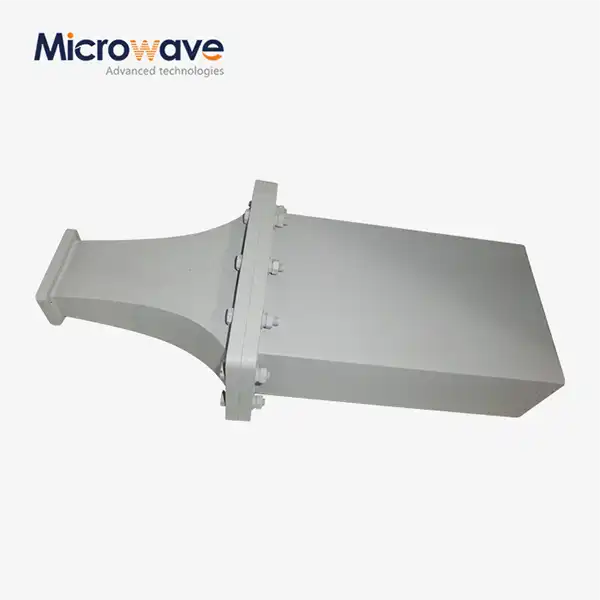 VIEW MOREDouble Ridge Waveguide Termination
VIEW MOREDouble Ridge Waveguide Termination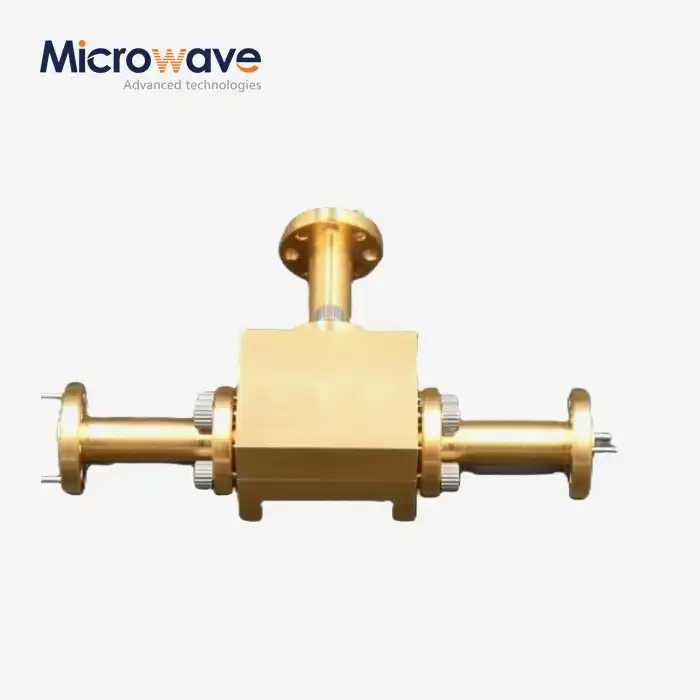 VIEW MOREWaveguide Power Divider
VIEW MOREWaveguide Power Divider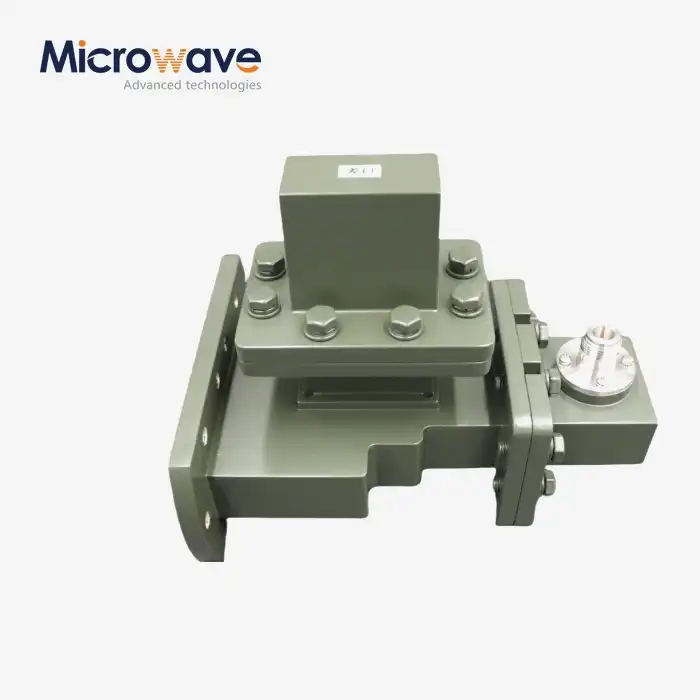 VIEW MOREE-Plane Tee
VIEW MOREE-Plane Tee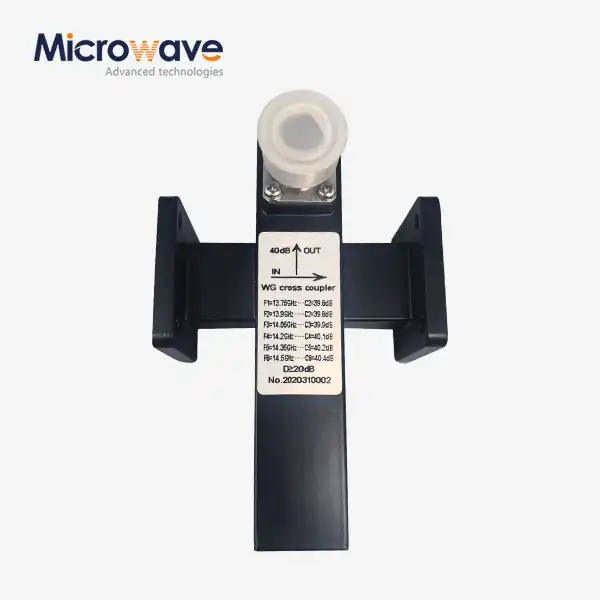 VIEW MORECrossguide Directional Coupler
VIEW MORECrossguide Directional Coupler




